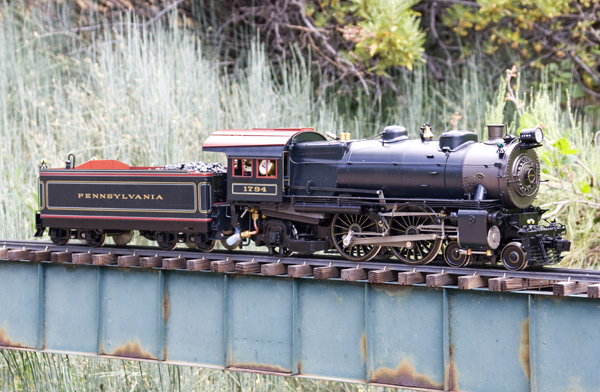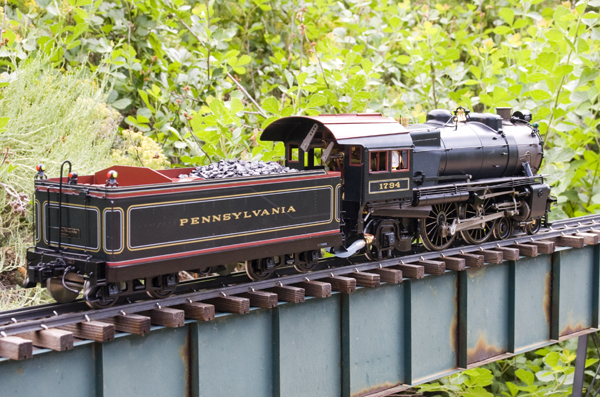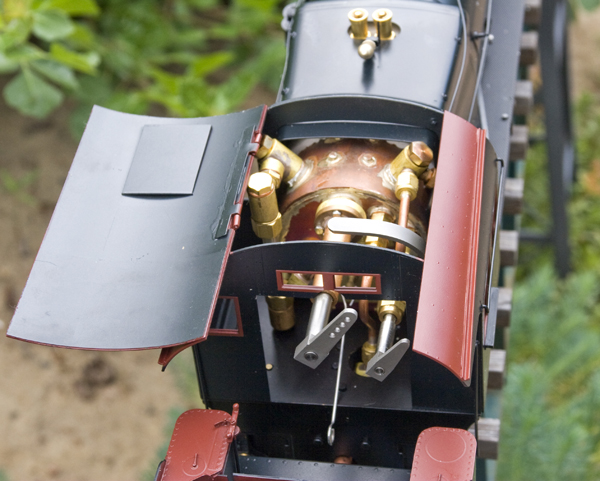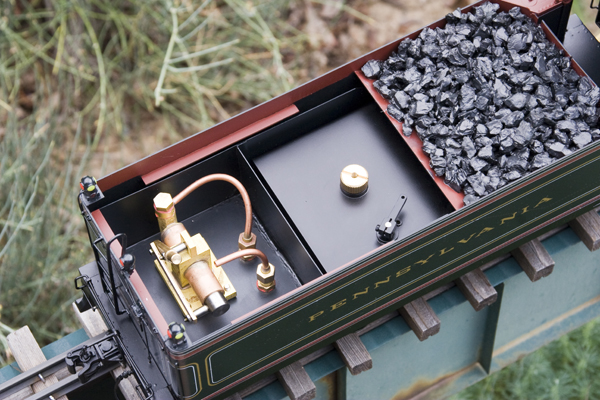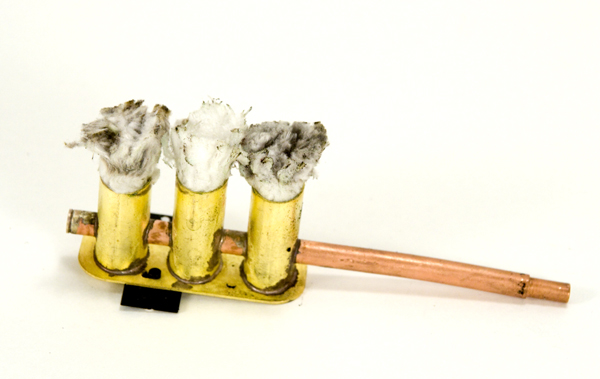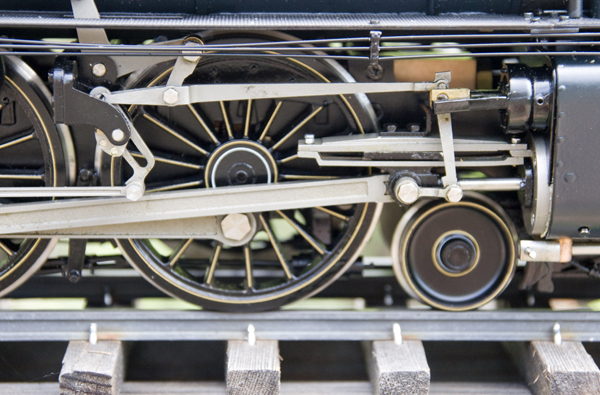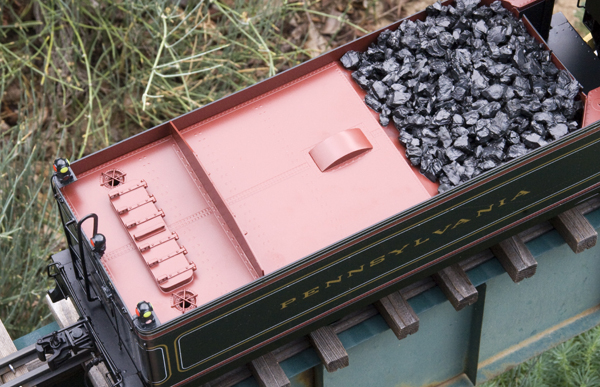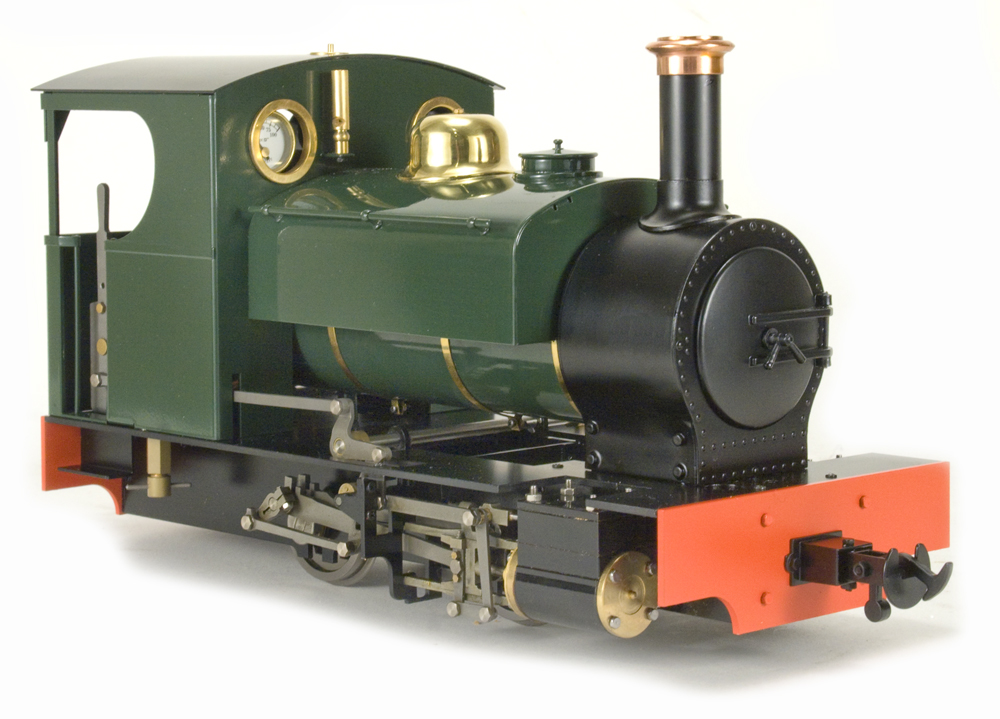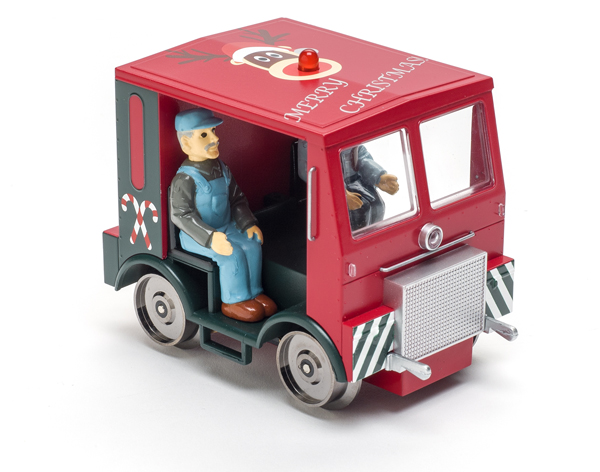Accucraft
33268 Central Ave
Union City CA 94587
Price: $3,700
Website: www.accucraft.com
1:32 scale, gauge-1 model of a Pennsylvania E-6 Atlantic; locomotive-type boiler with five flues; superheater; 60 psi blowoff pressure; alcohol fired; hand pump in tender; axle pump on rear driven axle; bypass system; water glass; pressure gauge; blower; twin safety valves; displacement lubricator; cylinder drain cocks; two double-acting cylinders; D-valves disguised as piston valves; Walschaerts valve gear controlled from the cab; hinged cab roof; minimum radius, 10′. Dimensions (loco and tender): length, 257/8″; width, 33/4″; height, 53/4″. In 1:32 scale this works out to 69’0″ x 10’0″ x 15’4″, respectively
Pros: High fidelity to prototype; high level of detail; excellent paint and graphics; sophisticated engine; authentic working valve gear; locomotive-type boiler; cylinder drains; excellent running characteristics; can be kept in steam indefinitely
Cons: No blowdown; feedwater line fouls fire door, which cannot open fully; small gap in cab roof on the non-hinge side
Our review model is painted in Pennsylvania’s Brunswick green and oxide red, with a graphite smokebox. The engine is fully lined out and is a thing of beauty. Paint and graphics are excellent. The review sample is alcohol fired (Accucraft also offers a gas-fired version). A large fuel tank sits in mid tender, behind the coal load. It is covered by the top deck of the tender, which must be lifted off for access. In addition to the filler plug on the tank, there is an on/off valve that releases the fuel to a small sump below the floor. This is the traditional chicken-feed alcohol system. Behind the fuel tank is a relatively small water space containing a hand pump. This pump can be accessed by lifting just the water hatch in the tender deck. A separate pump handle is supplied, which is used to engage the pump when required, then removed.
A second pump is actuated by an eccentric on the second driven axle. This is tied in with a bypass system, controlled by a valve below the cab on the engineer’s side. The valve can be closed to fill the boiler while the engine is in motion or opened to return the water to the tender, as the pump works all the time the engine is running. With practice, the valve can be partially closed to maintain a constant water level in the boiler as the engine runs. With this system, the engine can be kept in steam indefinitely, stopping only briefly to take on more fuel and water as needed.
The engine has a locomotive-type boiler with five flues, including a superheater flue. It has a dry firebox with wet side legs and a three-wick burner that is lit through the fire door in the backhead. Wick material appears to be a type of ceramic fiber. A wire handle is attached to the fire door for opening and closing. The feedwater line fouls the door, preventing it from being fully opened. This is not a huge deal, as an igniter can still be inserted through the opening. It would just be a little easier if the door could open fully.
The cab can be accessed via the roof, the middle portion of which is hinged and flips out of the way. On the backhead is a pressure gauge that shows through a side window in the cab. If you prefer your gauges to prototypically face the rear, I’m afraid you’re out of luck. The cab is quite crowded and there’s no room to easily turn the gauge, which would be difficult to see if it faced the rear anyway. There’s a water glass on the fireman’s side. Side-by-side throttle and blower valves have long extensions that make them reachable without lifting the cab roof. Twin safeties atop the boiler are set to blow at 60 psi.
The engine is powered by two double-acting cylinders. These are controlled by D-valves disguised as piston valves (which the prototype had). Walschaerts valve gear, controlled from the cab, operates the valves. Both cylinders are equipped with drain cocks. These are not the rotating kind, but slide forward and back to open and close the valves. The engine is unsprung.
To prepare the engine for operation, I first oiled it all around, placing a tiny drop of good-quality machine oil on the junctions between all the moving parts, including tender axles. Then the engine and tender were joined. There is one hose with a screw fitting; this is the feedwater line, which is under pressure. A silicone tube is used for the water-return line on the opposite side of the engine, and a third hose supplies fuel from the tender’s sump to the engine’s burner. The return and fuel lines were a little long, so I trimmed them for a better fit. I drained the displacement lubricator, located under the left running board, of water and refilled it with steam oil. There is no filler plug on the boiler for adding water, and the safety valves are not easily accessed, so the tender’s hand pump had to be used for this. I filled the tender’s water reservoir and pumped in about half a glass of water, intending to use the axle pump to bring the level up a little more when the engine was in motion.
When all was in readiness, I placed a suction fan in the smoke stack to draw the fire through the boiler while pressure was being raised, making sure the blower and throttle valves were closed. I opened the valve on the alcohol tank and, once the wicks were saturated, lit the fire through the fire door. I prefer to use a wire with a bit of wick material at the end, soaked in alcohol and lit, as an igniter. A gas barbecue lighter could also be used.
Once the pressure came up to around 20 psi, I opened the blower and removed the fan. Pressure came up fairly quickly. It is at this point that the engine becomes self sufficient. When 40 psi was reached, I opened the drain cocks, put the engine into forward gear, and opened the throttle. With the drain cocks open, there was little sputtering and hesitating. The cylinders cleared quickly, I stopped it briefly to close the drain cocks, and the engine was off and running.
This engine is a pleasure to run. The throttle is a little touchy, but I was running it light. Adding a train of coaches would have tamed it some. With those big drivers, it likes to run fast. Even so, I was able to throttle it town to a reasonable speed, after which it made lap after lap on my line. I discovered that, on this review engine, the axle pump did not work, so I had to rely on the hand pump in the tender to keep the water level topped up. With the occasional stop for a refill of fuel and water, I could have kept the engine running for hours. It is smooth and graceful in both directions. You need good track, though, as well as wide-radius curves. Since the engine is unsprung, it is pretty rigid, and will derail fairly easily on raggedy track. However, on smooth track, it just glides along.
The throttle and blower valve are readily at hand, as is the reversing lever (with the cab roof open). Because the cab is pretty crowded, there’s not much room for R/C gear, if you’re so inclined. I’m not saying radio control would be impossible but I think it would be difficult.
This is a fine engine. It is sophisticated and fairly complex, and I wouldn’t recommend it for beginners, unless you have someone with experience in these matters to help bring you up to speed. It’s important to understand how the engine functions so that, if there is a problem, you’ll know where to look for a solution. The bottom line, though is that the locomotive is lovely to look at and is a beautiful runner.





